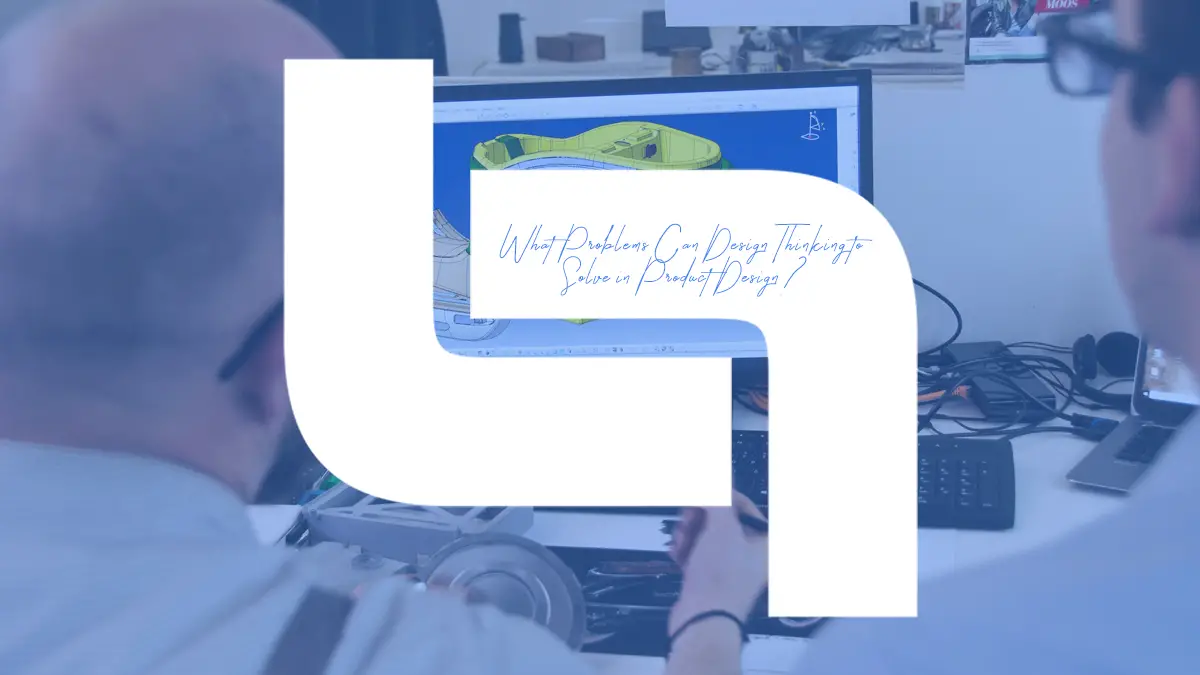Design thinking is a problem-solving approach that has gained significant popularity in the field of product design. It provides a structured framework to understand user needs, generate creative ideas, and develop innovative solutions.
By adopting a human-centered approach and encouraging iterative prototyping and testing, design thinking helps designers address various challenges and create products that meet user expectations. This approach emphasizes empathizing with users, defining the problem, ideating potential solutions, prototyping, testing, and iterating based on user feedback.
By incorporating design thinking principles into the product design process, companies can hire a product designer to enhance user experiences, drive innovation, and create solutions that truly resonate with their target audience.

Why is Design Thinking a Poplar Approach?
Design thinking has gained significant popularity for several reasons:
User-Centered Approach
Design thinking places the user at the center of the design process. It emphasizes understanding user needs, desires, and pain points through empathy and research.
By focusing on user perspectives, design thinking helps create products and solutions tailored to meet their specific requirements, enhancing user satisfaction and engagement.
Innovation & Creativity
Design thinking encourages a divergent thinking process that fosters creativity and the generation of innovative ideas.
By creating an environment that promotes brainstorming, ideation, and exploration of unconventional solutions, design thinking helps break free from traditional thinking patterns.
It enables the development of novel and unique concepts. You can hire product designers to make this more effective and efficient.
Problem-Solving & Complexity Management
Design thinking provides a structured framework for addressing complex problems. It breaks down problems into smaller, more manageable parts, facilitating a systematic and collaborative approach to problem-solving.
By incorporating iterative prototyping and testing, design thinking allows for continuous improvement and refinement of solutions.
Collaboration & Interdisciplinary Teams
Design thinking promotes collaborative teamwork and cross-functional collaboration, especially if you hire product designers.
It brings together individuals from diverse backgrounds, such as designers, marketers, engineers, and business professionals, to work together towards a common goal.
This interdisciplinary approach facilitates the exchange of ideas, perspectives, and expertise, leading to holistic and comprehensive solutions.
Adaptability & Flexibility
Design thinking is adaptable and can be applied to various industries and challenges. It is not limited to product design but can also be utilized in service design, business strategy, and social innovation.
Its iterative nature allows flexibility and the ability to respond and adapt to changing user needs and market dynamics. You can hire a product designer to oversee the process to make the most out of this advantage.
Customer-Centric Business Approach
Design thinking aligns with the growing emphasis on customer-centricity in business. By prioritizing user needs and experiences, design thinking helps organizations develop products and services that resonate with their target audience.
This customer-centric approach can increase customer loyalty, market competitiveness, and business growth.
Tangible & Measurable Outcomes
Design thinking encourages creating tangible prototypes and using user testing to gather feedback and validate solutions. This focus on tangible outcomes helps reduce uncertainties and provides concrete evidence of the effectiveness and viability of the design solutions.
In short, design thinking’s focus on user-centeredness, innovation, collaboration, adaptability, and tangible outcomes has contributed to its widespread popularity as a problem-solving approach in various domains.
It offers a systematic and human-centric methodology that fosters creativity, drives innovation, and helps organizations create products and solutions that truly address user needs and deliver value.
Design thinking is a valuable approach when developing new products or services. It helps foster creativity, empathy, and collaboration while keeping the user at the center of the development process.

How Design Thinking Differs From Other Approaches: 5 Key Factors
Design thinking is a problem-solving approach that differs from traditional methods in several ways. Here are some aspects that distinguish design thinking:
1. It’s Iterative and Non-Linear
Design thinking tracks an iterative process with multiple feedback loops. It encourages experimenting, prototyping, and learning from failures. It doesn’t rely on a linear, step-by-step approach but allows for flexibility and revisiting previous stages based on new insights.
2. It’s Creative and Collaborative
Design thinking harnesses the power of creativity and encourages the generation of diverse ideas.
Even if you hire product designers, expect multidisciplinary collaboration while bringing together individuals with different backgrounds, expertise, and perspectives to tackle complex problems collectively.
3. It’s Solution-Oriented
Design thinking aims to generate practical solutions addressing underlying challenges or opportunities.
It focuses on finding actionable outcomes rather than purely theoretical or abstract concepts. It encourages prototyping and testing ideas in the real world to validate their effectiveness.
4. It’s User Feedback-Driven
Design thinking actively seeks input and feedback from end-users throughout the process.
It involves conducting research, interviews, and observations to gain deep insights into users’ experiences and preferences. User feedback is used to refine and improve solutions continuously.
5. It Integrates Qualitative and Quantitative Methods
Design thinking combines qualitative research methods, such as interviews and observations, with quantitative data analysis to understand the problem space comprehensively. It blends analytical thinking with empathy and intuition.
Conclusion
Design thinking sets itself apart from other approaches through its human-centered, iterative, and collaborative nature. It focuses on understanding and empathizing with users, generating creative ideas, and embracing ambiguity and complexity.
Moreover, design thinking emphasizes practical and actionable solutions, incorporating user feedback throughout the process. Once you hire product designers, you’re assured they integrate qualitative and quantitative methods, which can be applied in diverse domains.
Organizations and individuals can approach problem-solving in a more innovative, user-centric, and effective way by adopting design thinking principles.

